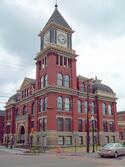Joseph Lawler’s learned essay on induced demand, looking at the case of highway expansion in Austin, Texas, is fair-minded, but somehow seems more about theory than actual reality. He talks about downtown as if it really mattered all that much. It doesn’t. read more »
Suburbs
Americans Accelerate Move Away from Density
For more than 75 years America has been dispersing away from dense urban cores, with nearly all population growth in neighborhoods with a suburban form read more »
Are Progressives to Blame for the Worsening Housing Crisis?
In recent years, housing has emerged as arguably the key driver of class divisions in the Western world. For decades, working- and middle-class people could dream reasonably about buying a house read more »
- Login to post comments
Millions Move Away from Density in Just Three Years
Between 2020 and 2023 (annual population estimates, as of July 1), more than 3.2 million US residents moved from counties with higher urban population densities (number of urban residents divided by urban square miles), to counties with lower urban densities. read more »
- Login to post comments
Progressive Geography's Intellectual Dead End
Americans are familiar with steep political divisions on issues like race, class, and gender. Perhaps less understood, but arguably more definitive, is the widening gap between the cognitive elites concentrated in big cities and the rest of the country. read more »
- Login to post comments
Massive Shift from Urban Cores to Suburbs and Elsewhere
Moving Away from the Major Metros: The recent Census Bureau population estimates release revealed a massive shift of domestic migrants away from the major metropolitan areas read more »
Americans Moving to More Affordable Areas
In recent years, driven by the rising cost of living and the remote work revolution, Americans have been moving to more affordable housing markets. This is evident in an analysis of American Community Survey data gathered over five years (2018 to 2022).
Housing Affordability and Net Domestic Migration: The Nexus read more »
- Login to post comments
Let America Sprawl
Americans, with little help from government, are reinventing themselves and boosting their prospects by settling in less expensive, less regulated regions where rents and house prices are more affordable. read more »
- Login to post comments
Transportation Policy and the Ukrainians
The dominant philosophy that guides North American land use and transportation policy is advocacy of car ownership. The logic is simple. If you have a car you have automatic access to a wide variety of geographic employment options at any time of the day or night regardless of weather. read more »
- Login to post comments
Whatever Works
Sometimes a story takes a number of years to ripen. And sometimes two or three stories merge in unexpected ways. I just had a moment of convergence when new infill development, sub rosa adaptation, and wartime migration all collided. read more »
- Login to post comments






















